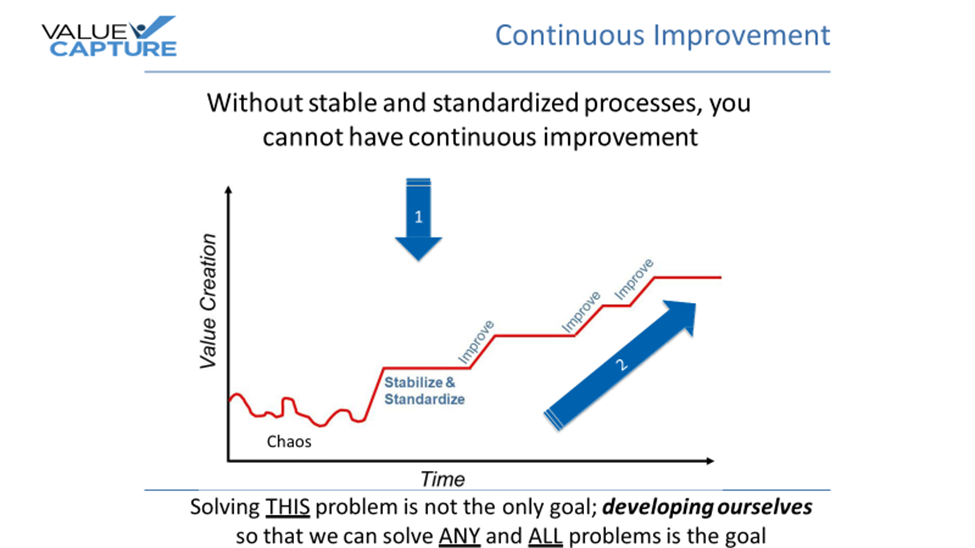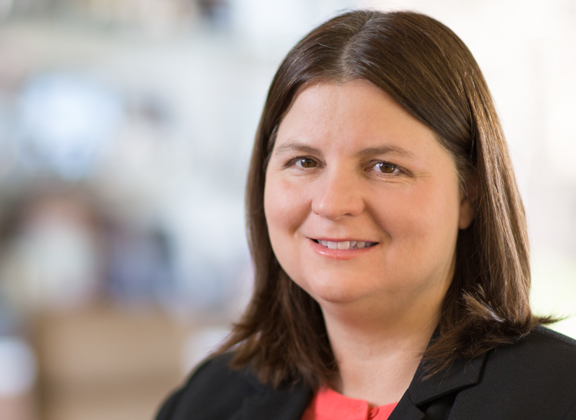By Lisa Beckwith, Value Capture Principal, Certified Facilitator of the Shingo Institute
It’s a large understatement to say that 2020 has been a very challenging, difficult year, certainly the most challenging year in my career. One positive aspect, though, has been the time to collaborate with teammates using PDCA thinking to refine various work processes. Through this process, we’re sharing learnings from our different experiences. Here, I want to focus on what I’m learning from my teammates and others, as we explore improvement methodologies and leadership frameworks.
What are Some of the Possible Routes?
My new learnings are built around gaining deeper understanding of multiple routes to excellence. Some of the concepts I have been thinking about recently include –
- "Being excellent at everything that you do" (Paul O'Neill);
- Shingo Guiding PrinciplesTM (Shingo Institute);
- Four types of problems (Art Smalley);
- The Value Capture Roadmap (a refinement of our transformation approach);
- Sustaining progress toward perfect through continual learning
The Shingo Guiding PrinciplesTM are 10 principles of operational excellence that are intimately intertwined into the systems and culture of an organization (how they’re intertwined and their performance impact is a very different discussion). Three principles I’ll focus on here are Respect Every Individual, Lead with Humility and Constancy of Purpose. We can unpack and learn about each of the principles and find benefit in describing and identifying a behavior that reflects each one of them, even as we understand that the principles do overlap.
Leaders challenging their organizations to set goals at their theoretical limit (zero harm, excellent at everything) is extremely powerful and the right thing to do to start everyone in the organization on a path toward perfect. What is even more powerful is for a leader to mean zero harm. Really. Mean. Zero Harm. Like Paul O'Neill did as the CEO of Alcoa, when he meant zero harm every day for everyone, energizing and aligning some 140,000 global employees around safety, problem solving and being the best in the world at everything.
There are behaviors that leaders do and learn their way into doing, to focus on zero harm for everyone, every day. These behaviors include: learning promptly about harm incidents by understanding what happened and what was done to resolve the problems; breaking down barriers that prevent resolution; and, proactively preventing similar occurrences throughout the rest of the organization.
The leadership focus and actions create Constancy of Purpose for the people of the organization. There is a real and felt purpose, so people realize that making the work safer to do is part of doing the work. The purpose of zero harm helps leaders to work toward creating an enterprise-wide Respect for Every Individual by letting everyone know, in word and action, that they are important (that they truly are the "most valuable resource"). Workers’ personal safety, as well as their active participation in creating solutions to problems, are essential to continually making the organization better.
Setting goals of zero harm and "being excellent at everything that we do" helps the leader to lead the organization on a learning journey by creating the tension necessary to achieve both. This learning journey aligns well with Art Smalley’s description of the evolution of four types of problems. These are:
- Type 1- trouble shooting;
- Type 2 - solving gaps from standards;
- Type 3 - solving problems to reach a target condition; and,
- Type 4 – open-ended.
When we consider developing "eyes to see" (meaning teaching people to “see” and identify problems), people begin to become really good at identifying harm or problem occurrence. They learn to "contain" the problems (Type 1) and solve them to root cause (Type 1 and 2). As they develop their eyes to see and their problem-solving capability, they begin to see and call out risks of harm, upstream defects before they reach a patient or customer, and barriers to their work (Type 1 and 2). As they evolve their improvement work, people see breaches of work design principles and identify waste in the processes (Type 3). Type 3 problem solving thinking typically occurs after people have experience solving Type 1 and 2 problems. Setting a goal of "excellent at everything" can help to challenge the status quo and begin to tackle the waste and inefficiencies in their processes.
Shortcuts are Actually Detours
Sometimes there may be a temptation to start with solving Type 3 problems to try to get the most benefit from improvement efforts. One of my colleagues, José Bustillo, shares a visual that can help people to recognize that improvement is a learning journey without shortcuts.

Lead with Humility by Learning
Value Capture’s Roadmap, which serves as a graphic representation of how we work with clients in their transformations, depicts a simultaneous journey toward zero harm and becoming “excellent at what we do.” The critical path to succeed in this is to truly become a learning organization. (This requires the leaders to acknowledge that they do not have all the answers and that they will be learning along with the workforce, i.e., they will Lead with Humility.) I like it and think that it is the right "road" for our clients to take. I think that it is important to help our clients to be able to measure the progress of both outcomes and learning behaviors as they strive to make continual improvement the way their work is done.
We need to make progress on process outcomes related to the harms and the quality, cost, and time measures, but we also want to keep our eyes (and our clients’ eyes) on the learning progress. We should be celebrating every problem solved and improvement made. I remember a client hospital attained a huge improvement in harm reduction, but maybe even more astounding was the increase in the identifications of risks of harm by staff members (by 500%) while the incidents that reached a patient decreased (by 66%) in the first year. These types of measures are key to help people recognize the behaviors that are driving the progress of their learning.
All Roads Lead to Learning and Excellence
In conclusion, leveraging learning from Shingo’s powerful understanding of principles of operational excellence, Paul O’Neill’s proven leadership behaviors and model at Alcoa, and Toyota’s problem-solving methodologies, which are elegantly complementary and reinforcing of each other, can help organizations create their own learning roadmap forward toward excellence.

Written by Lisa Beckwith
Lisa Beckwith is a founding principal of Value Capture, LLC. She provides on-site support and training for leaders, managers and staff to help them rapidly achieve safety, quality and financial goals through the application of systems principles. Full Bio

Submit a comment